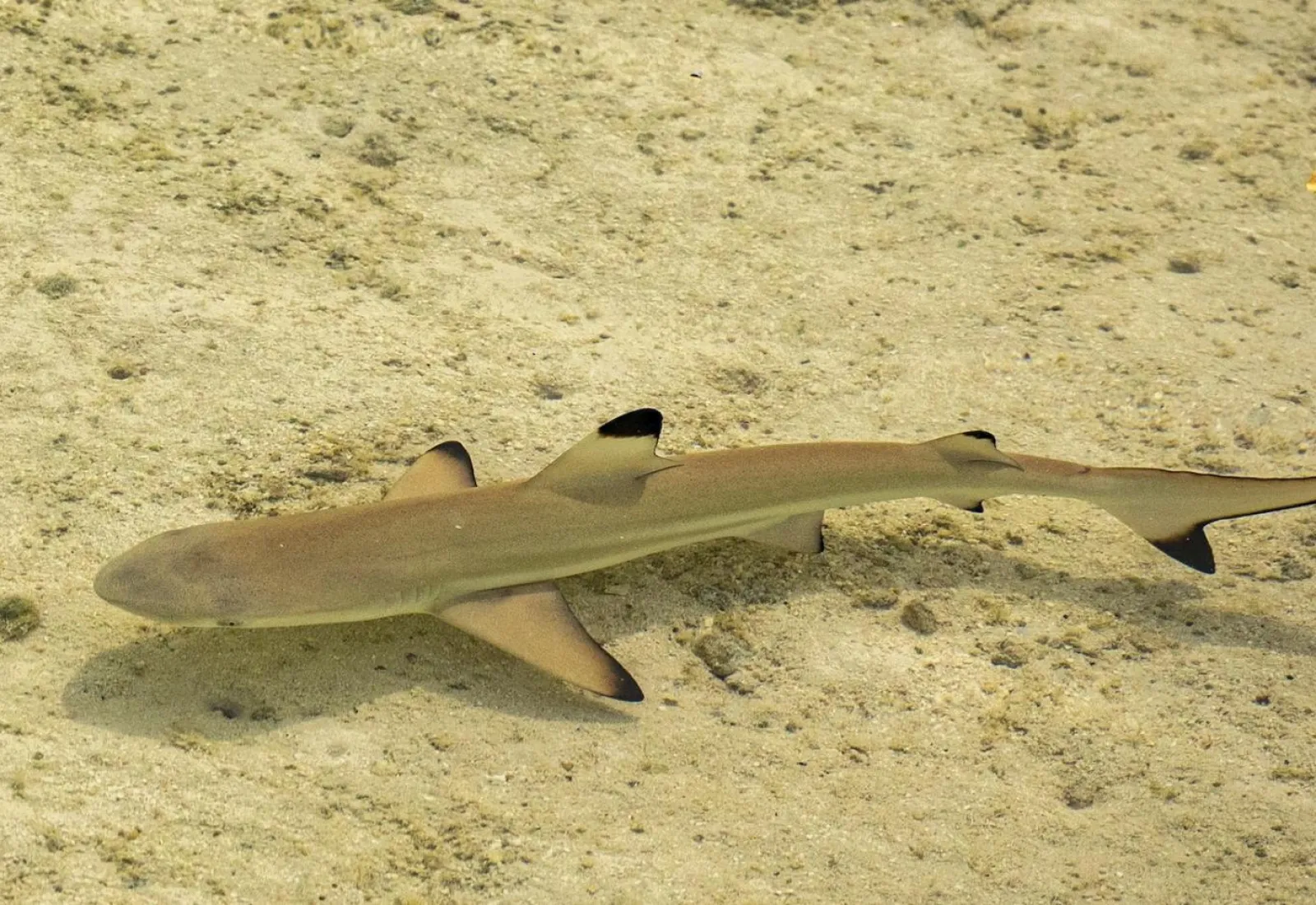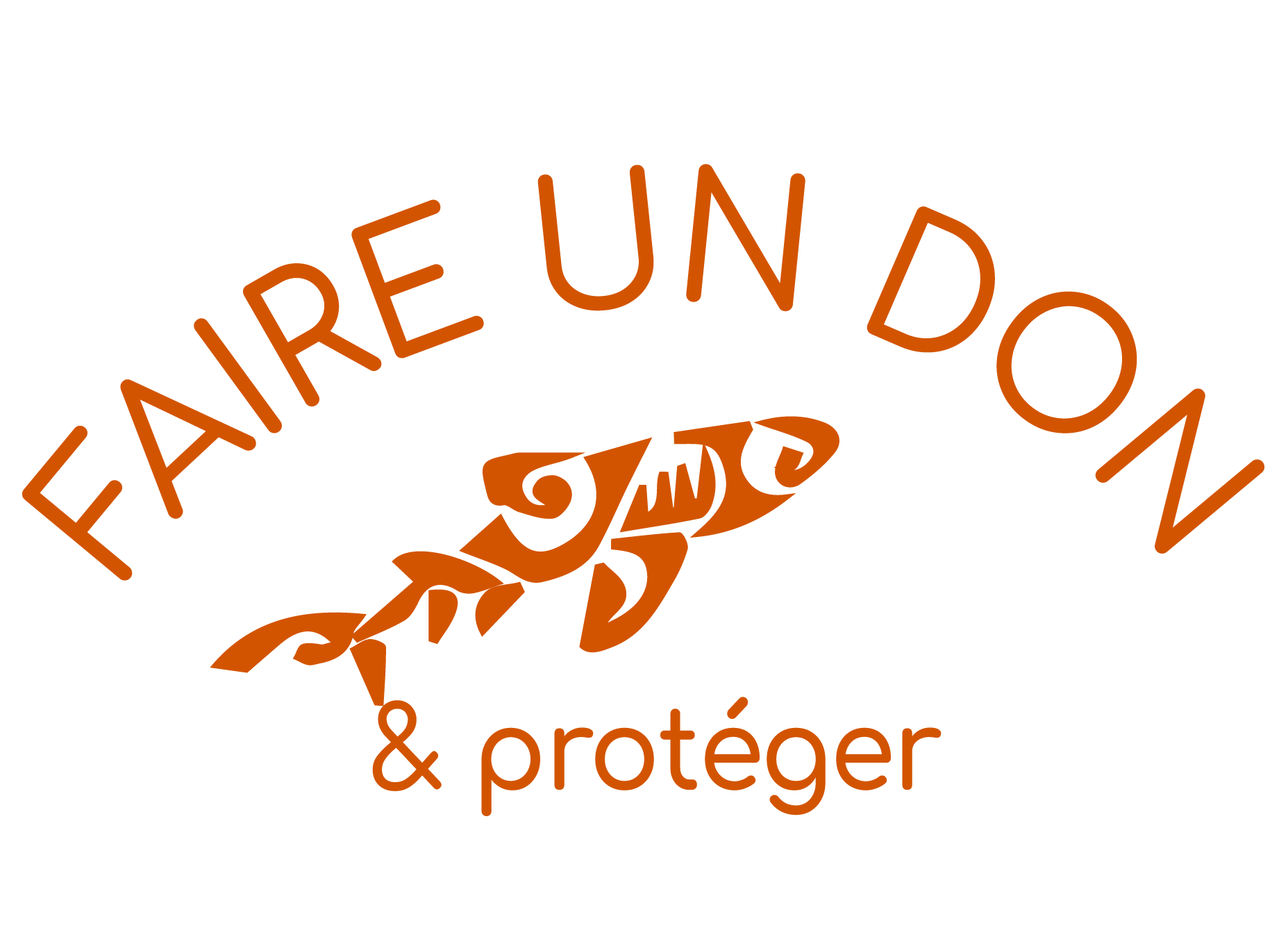Update : 2023
Le Projet Tetiaroa Reef Shark (Projet des Requins de récif de Tetiaroa) a atteint une étape majeure en 2023 avec son dixième anniversaire (projet lancé en 2014) !
L'année 2023 a également été marquée par de grands succès, avec trois points forts principaux. Tout d'abord, nous avons mené à bien deux campagnes de terrain, au cours desquelles nous avons entièrement remis à neuf le réseau de récepteurs et déployé 22 nouvelles balises sur deux espèces (requins à pointes noires et requins citron à nageoires falciformes), couvrant un large éventail de tailles, des juvéniles âgés de seulement quelques semaines (~50 cm) aux quasi-adultes approchant les 2 m de longueur. Parmi ces balises figuraient 15 nouvelles balises de prédation ultra-modernes conçues pour de jeunes requins juvéniles, qui nous indiqueront si et quand ces nouveau-nés sont décimés par un requin plus grand. Ces données seront inédites car les taux de prédation sur les jeunes requins sont largement méconnus.
En 2023, Aarthi Kannan, boursière Fulbright, a poursuivi son travail sur le terrain, enregistrant le comportement des requins dans le lagon à l'aide de caméras sous-marine appâtées (BRUVs). Aarthi a recueilli des centaines d'heures d’enregistrement vidéo montrant des requins ainsi que de nombreux autres habitants de l'atoll. Ces enregistrements serviront à éclairer davantage le comportement animal dans le lagon, notamment les moments et les endroits où les requins sont les plus actifs, et à déterminer si les requins provoquent une réaction d'évitement chez d'autres poissons.
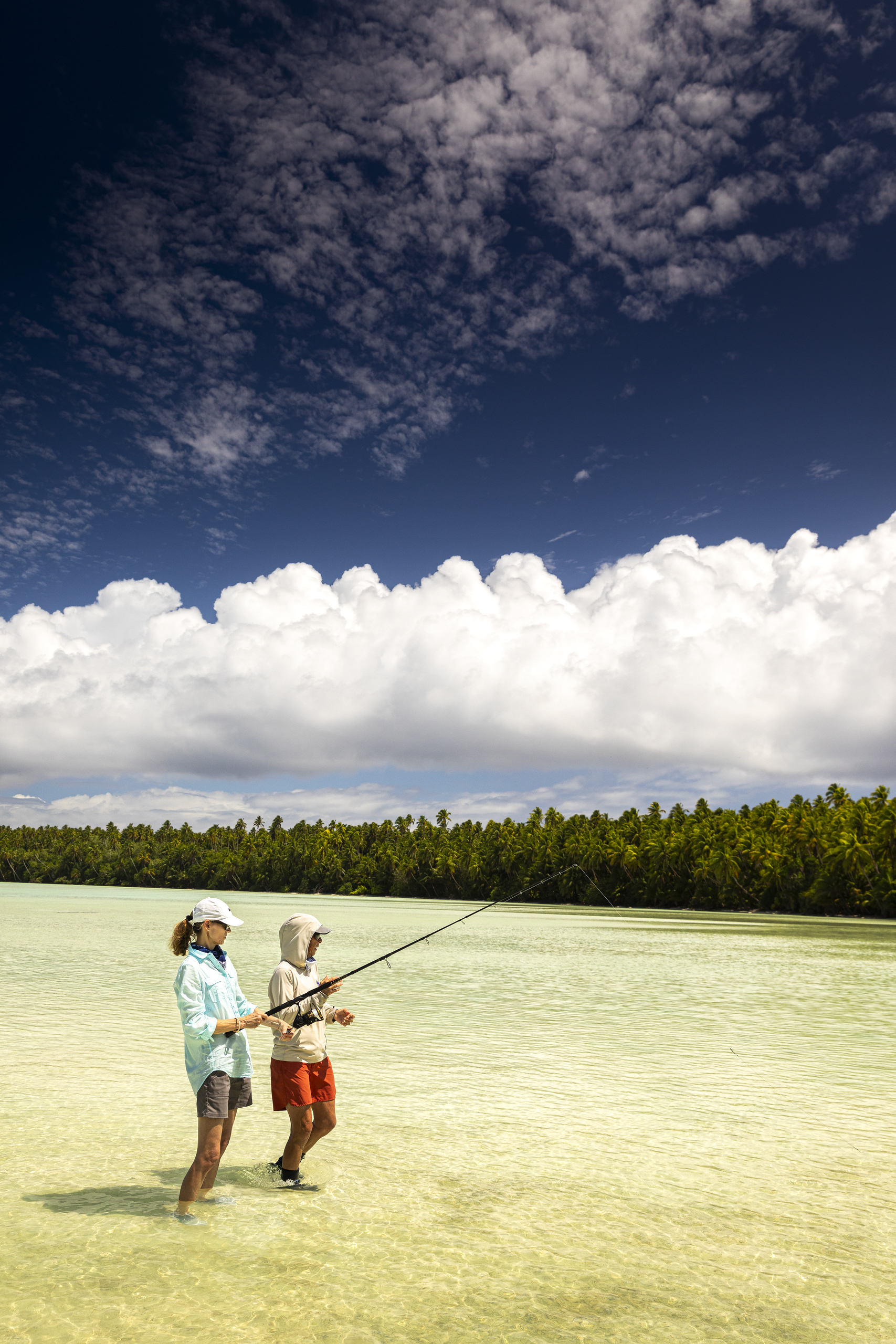
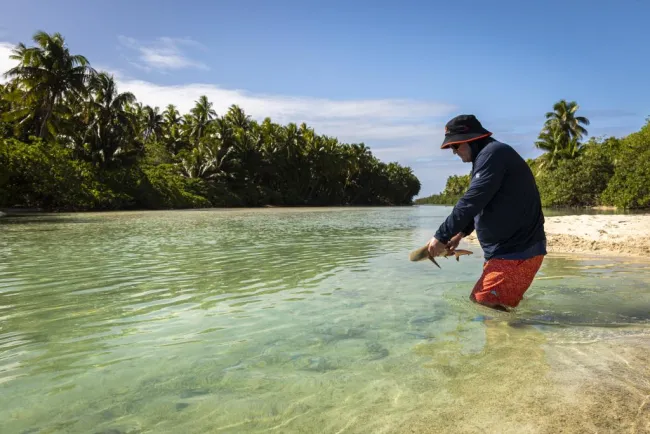 Retour au lagon
Retour au lagon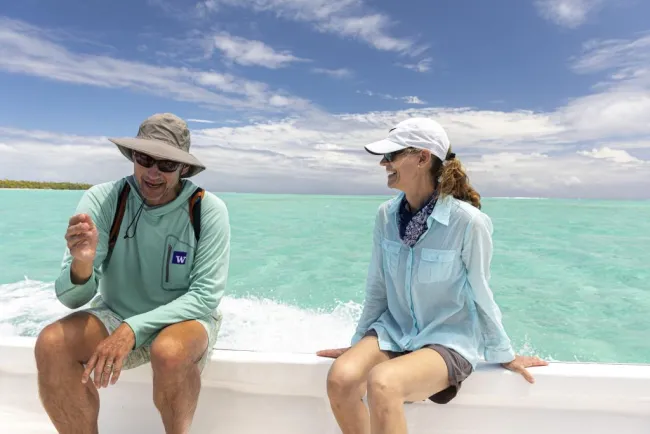 Planning de la journée
Planning de la journée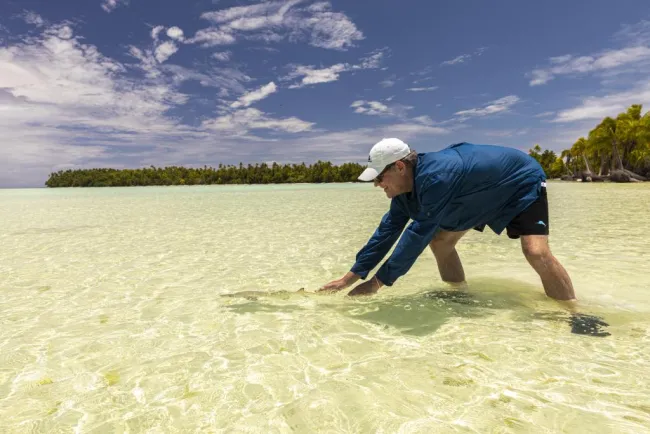 Remise à l’eau d’un requin citron
Remise à l’eau d’un requin citron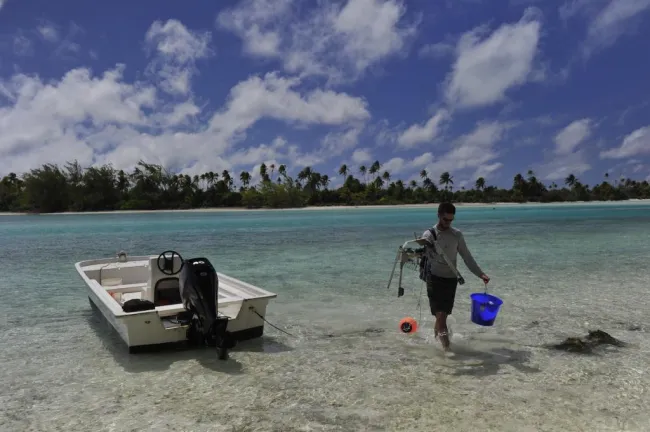 Fin d’une journée d’observation des requins
Fin d’une journée d’observation des requins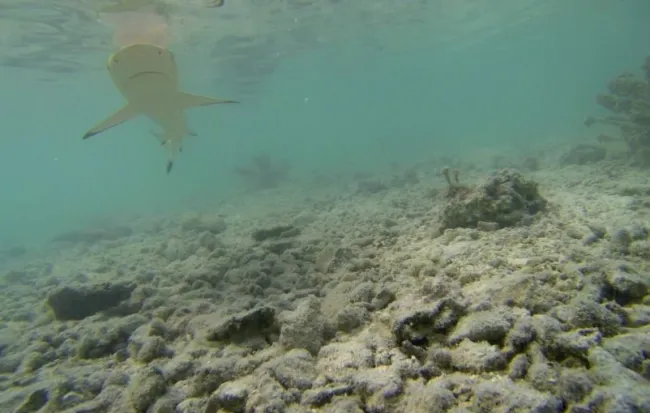 Bébé requin à pointes noires
Bébé requin à pointes noires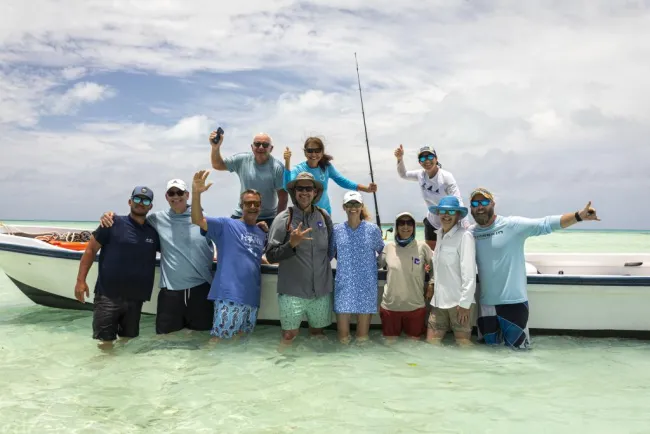 Équipe des requins
Équipe des requins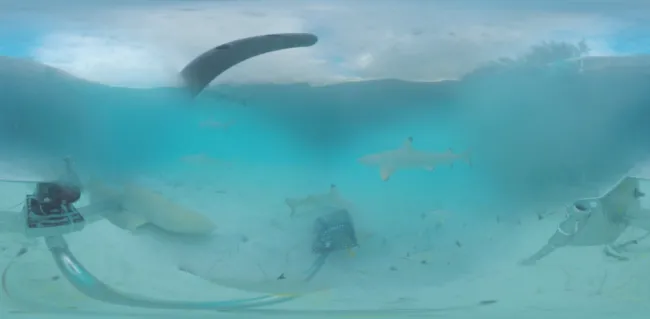 Observation des requins filmés à 360°
Observation des requins filmés à 360°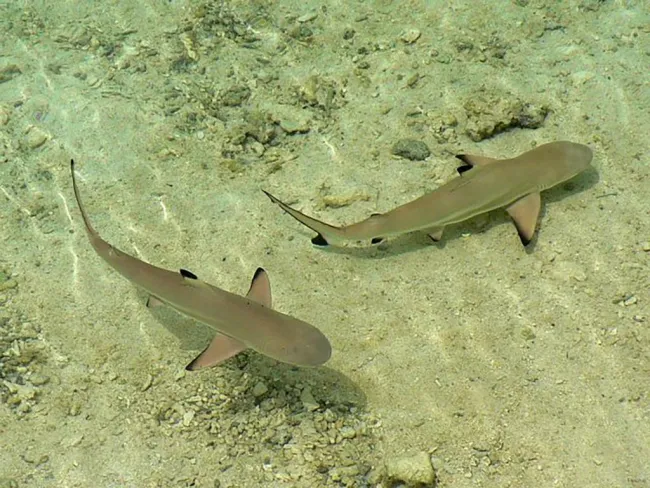 Requins à pointes noires dans le lagon de Tetiaroa
Requins à pointes noires dans le lagon de Tetiaroa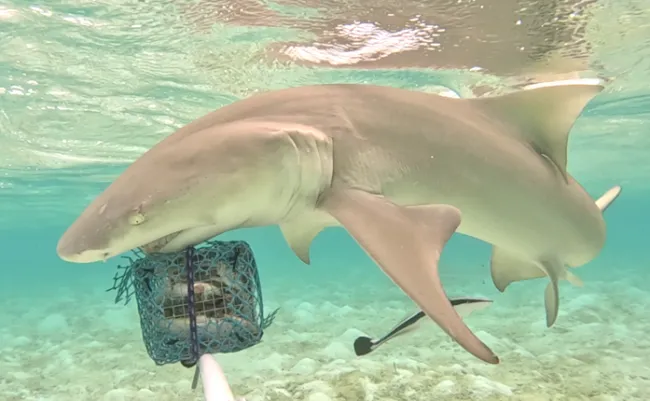 Requin à pointes noires adulte
Requin à pointes noires adulte
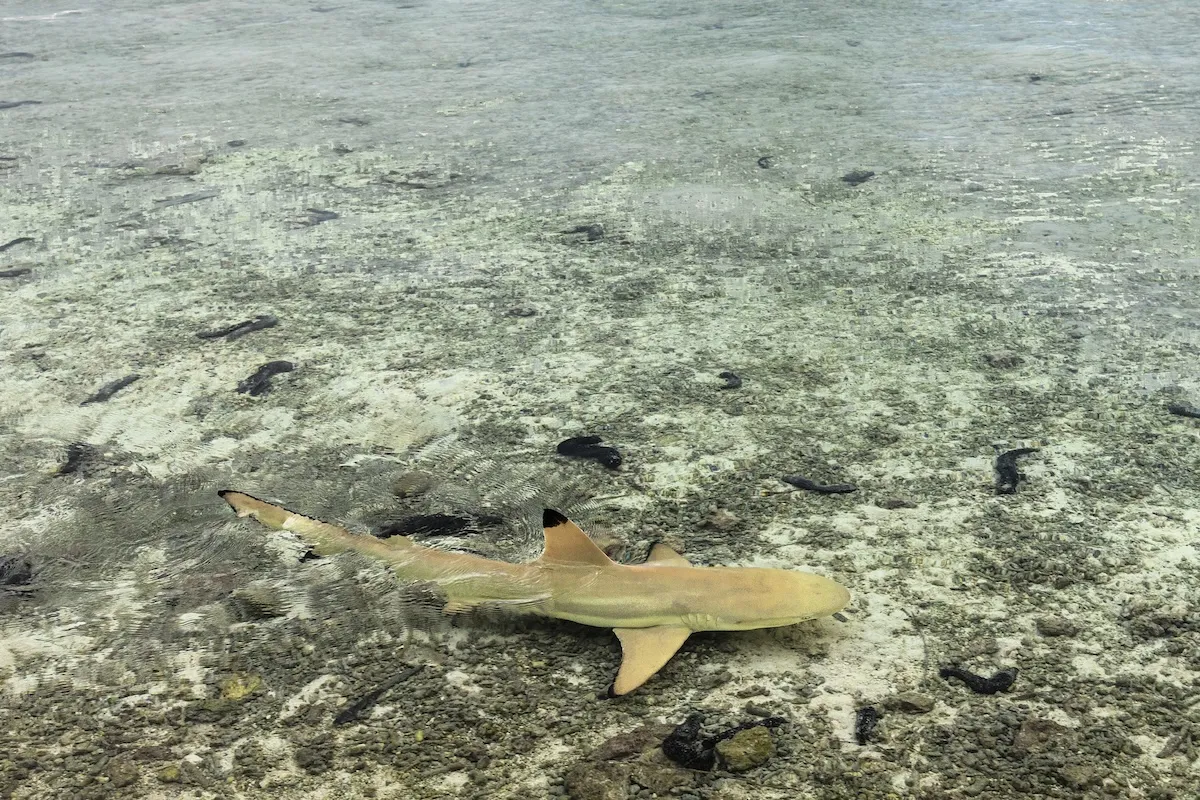
Octobre-Novembre 2022
En collaboration avec la Tetiaroa Society, des chercheurs de l’Université de Washington, de la Florida International University et du Centre de Recherches Insulaires et Observatoire de l’Environnement (CRIOBE) ont poursuivi la première étude à long terme sur l’écologie spatiale des requins citron à nageoires falciformes (Negaprion acutidens) et des requins à pointes noires (Carcharhinus melanopterus) dans le lagon de Tetiaroa.
Au cours de cette mission, on a procédé à l’installation d’émetteurs de suivi de mouvement sur 15 requins supplémentaires. Désormais un total de 32 requins à pointes noires et de 13 requins citron sont suivis. De plus, toutes les données positionnelles des 9 récepteurs acoustiques du lagon ont été récupérées et analysées, fournissant des dizaines de milliers de localisations de requins depuis le lancement du projet en octobre 2021. Cette capture de données incomparable nous permet d’examiner les mouvements et les interactions entre les requins à pointes noires et les requins citron, ainsi qu’entre les adultes et les juvéniles de chaque espèce dans l’environnement lagunaire.
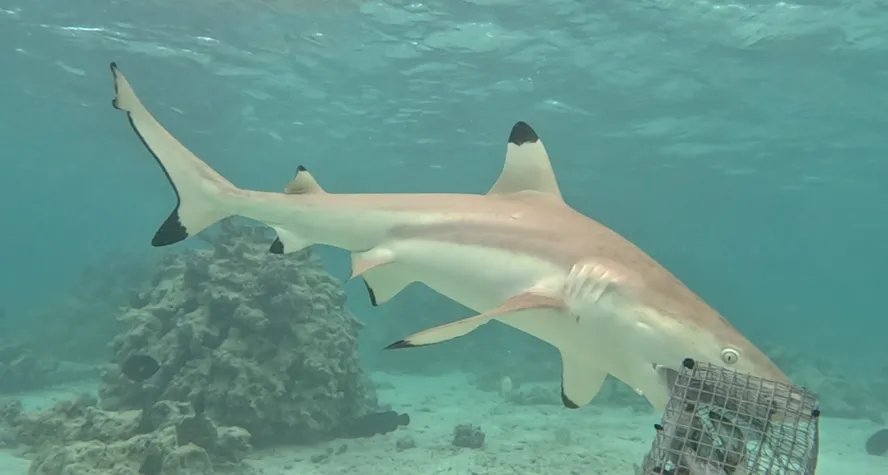
La mission de 2022 a également marqué le lancement d’un nouveau projet utilisant des caméras sous-marines appâtées (BRUVS) pour mieux comprendre les schémas d’activité quotidienne des requins dans le lagon et les effets de cette activité sur d’autres espèces de l’écosystème. Certaines de ces caméras sous-marines ont été déployées dans des eaux peu profondes (< 1 m de profondeur) pour cibler, pour la toute première fois, le comportement des jeunes requins juvéniles, tandis que d’autres ont été placées sur le récif extérieur, permettant d’enregistrer la présence et le comportement des requins et d’autres espèces en dehors du lagon. Ce projet de caméra sous-marines est dirigé par Aarthi Kannan, boursière Fulbright, qui fera partie de l’équipe requins à Tetiaroa jusqu’en juin 2023.
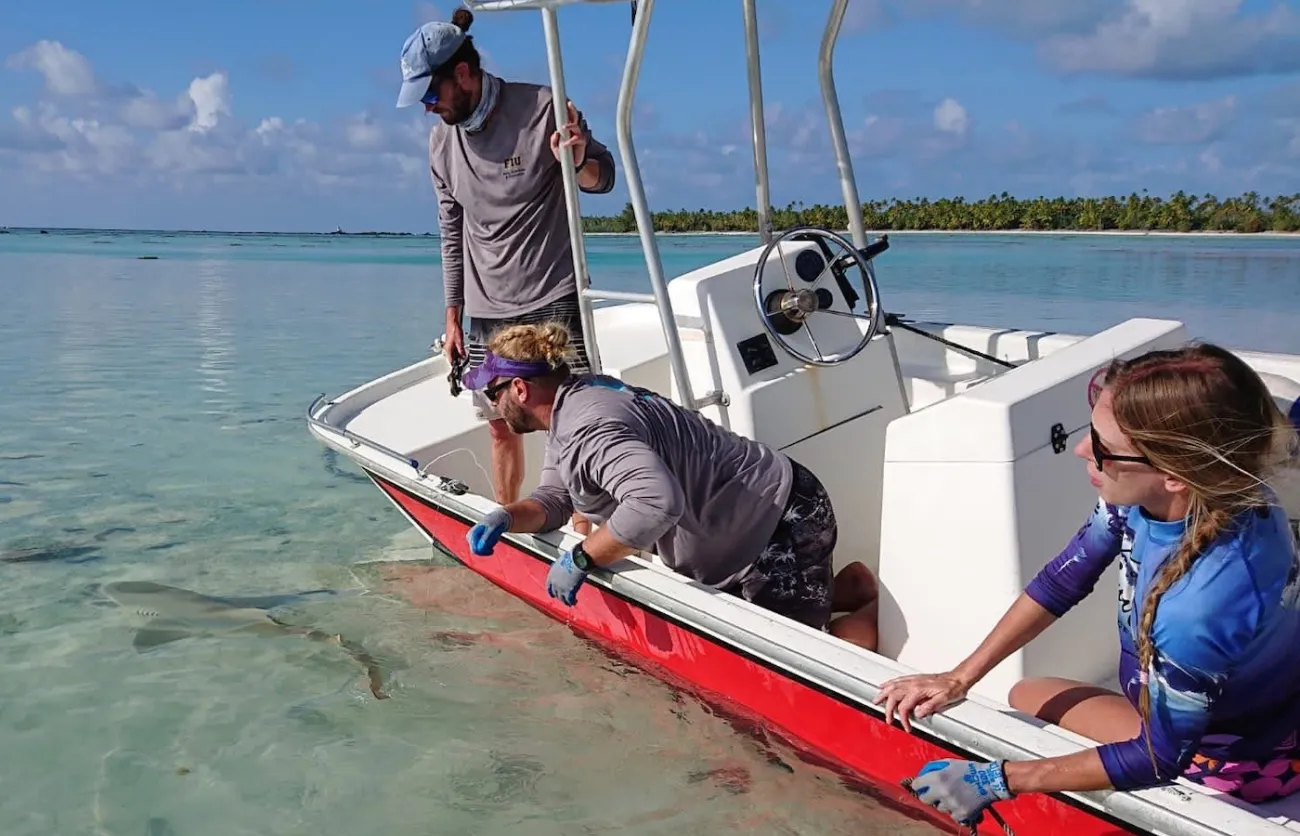
Octobre 2021
En octobre 2021, en partenariat avec la Tetiaroa Society, des chercheurs des mêmes institutions ont lancé la première étude à long terme sur l’écologie spatiale des requins citron et des requins à pointes noires dans le lagon de Tetiaroa.
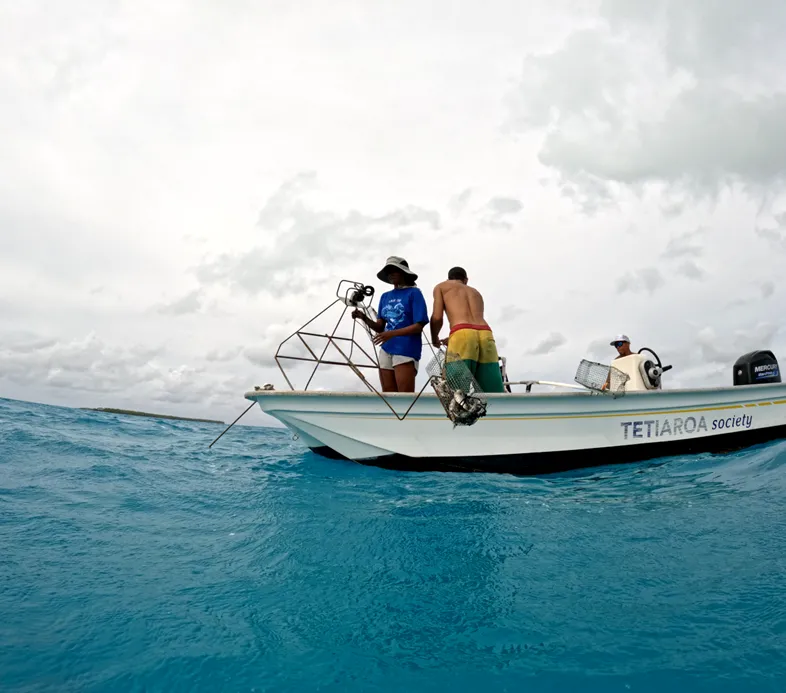
L’équipe de recherche a déployé un réseau de 10 récepteurs acoustiques sous-marins dans tout le lagon, capables de suivre les déplacements des requins marqués sur plusieurs années. À l’aide de méthodes de pêche minimisant les impacts, les chercheurs ont également marqué 23 requins à pointes noires et 7 requins citron, allant des juvéniles aux adultes matures. Cette étude à long terme fournira des données essentielles pour évaluer les impacts potentiels du changement climatique, du développement côtier et des choix de gestion de la conservation sur les populations de requins. De plus, ces données permettront d’explorer des questions écologiques cruciales, notamment :
- Comment les juvéniles et les adultes utilisent différemment le lagon ?
- Combien de temps les juvéniles restent-ils à Tetiaroa avant de migrer ?
- Les requins qui quittent le lagon reviennent-ils les années suivantes ?
- Quelles zones du lagon sont utilisées plus fréquemment et sont donc potentiellement cruciales pour les requins ?


